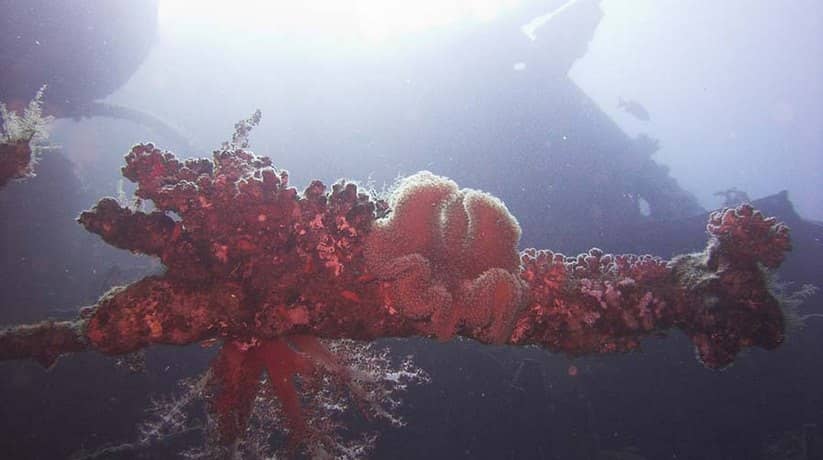
Agia Varvara Shipwreck Sharm information tours, prices, booking
Agia Varvara Shipwreck is one of the most popular wreck diving sites in Sharm El Sheikh, Egypt. In Fact, Agia Varvara built by Ch & At Aug-Normand of France, and launched as the “Nina” in 1950. Officially described as a General Cargo Vessel, it later called Athenia and then Petros. It was before finally re-named Agia Varvara in 1974. A relatively small ship for one with 3 cargo holds, it displaced 98 class=”proglinks”5 grt and had a 5 Cylinder Oil-fired engine. It was in fact capable of producing 750 bhp and a top speed of 10 Knots. Moreover, it was 73.2m x 9.33m – with a draught of 4m. The ship owned and operated by the Gestar Shipping Company of Famagusta, Cyprus at the time of her loss.
On 27 June 1976, the Agia Varvara sailed in ballast from the Jordanian port of Aqaba destined for Port Said. The ship was only 90 miles further south when, in the early hours of the following morning, it drove hard onto the inshore Reef near Nabq – a few miles north of Sharm El Sheikh. The crew were subsequently rescued by the Israeli Navy.
The word “Agia” is pronounced with a silent “g” and this has led to several wrongly spelled versions of the name. One of the leading authorities on shipwrecks includes details of this vessels loss under the misnomer “Ayia Varvara.” Even Lloyds List of 29 June 1976, describes the vessel as the “Aghia Barbara!”.
More information about Agia Varvara Shipwreck Sharm:
Departing from Naama Bay heading in a northerly direction, it will not be long before you pass close to the four Reefs. In fact, they mark the center of the narrow interface between the Red Sea and the Gulf of Aqaba. Here the rule of the road is keeping right with “up” traffic taking the eastern route. In fact, it is between the reefs and Tiran Island and “down” traffic keeping to the west. Jackson Reef is the most northerly of the four reefs and Gordon Reef the most southerly. Ominously, they are both marked by the prominent shipwrecks “Lara” and “Loullia”. Respectively – a clear warning for all vessels entering and leaving the Gulf of Aqaba to exercise extreme care. From some distance away you will be able to see the superstructure of the Million Hope.
One of the largest ships ever lost in the Red Sea and one which acts as a marker for the Agia Varvara. A combination of a relatively shallow attitude and an exposed position mean that after 25 years the vessel is now rather broken up. It is although there are some very large sections for those who enjoy exploring the “big” bits. The stern found resting on the seabed at 20m and pointing up the reef. All the portholes are still in place and the very bent propeller still attached. The rudder, however, found a short distance away. Above the stern, the diver will be able to investigate inside the lower part of the bridge castle. In fact, it allows access down to the engine room. Curiously, a large portion of the engines lie exposed on the reef at 6-8m.
Further information about the diving sites:
A few meters to the north is another large section of superstructure. This is the upper part of the bridge castle which became entirely separated. In fact, it now rests on the seabed at 20m. Trapped underneath is the ships funnel – on its side of which is an open access door. The Coral Reef towers over the wreckage here large pieces of steel plating and iron cross-members also found. Yet, more a short distance even further to the north. The focsle and bows appear remained on the surface of the reef and, over a period of 25 years. In fact, they reduced to a few remnants of scrap metal and the occasional bollard.










